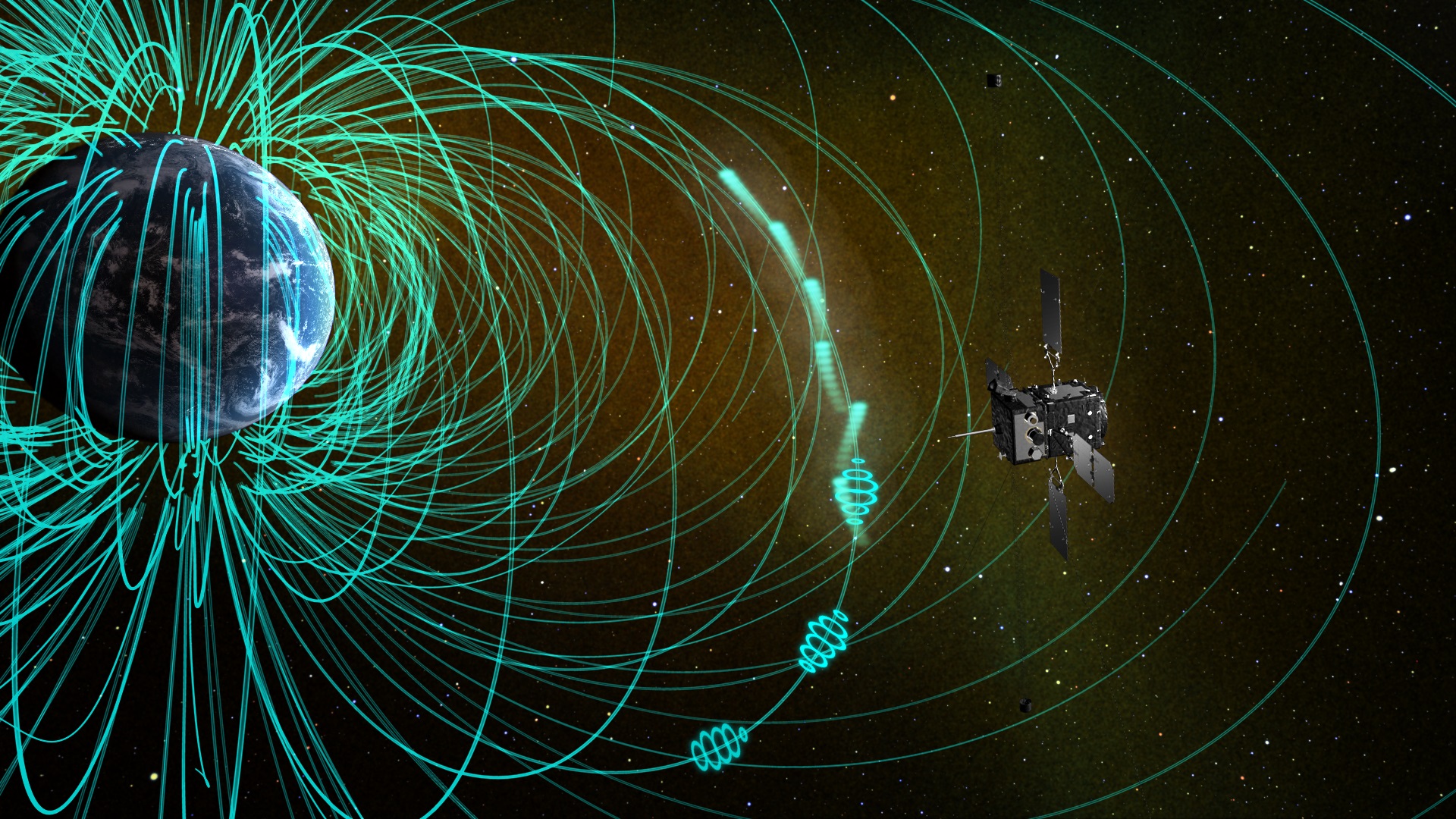Ganymede awakens: whistling and chirping around Jupiter’s moon
The Sun generates low-frequency radio waves in the Earth’s radiation belt. If you were to listen to them in a loudspeaker (which is actually what scientists were doing when these radio waves were discovered in the 1960s), they sound like the whistling and chirping of a flock of birds. These special waves were therefore given the name chorus waves. It was later discovered what these chorus waves produce: they are particularly well suited for transferring energy to electrons in the solar wind. Charged particles accelerated by them can then produce particularly good auroras when they enter the Earth’s atmosphere. Chorus waves are apparently closely related to the phenomenon of pulsating auroras in the form of flickering areas of the sky hundreds of kilometers long.
But chorus waves are not just on Earth. Any celestial object that has its own magnetic field could also be surrounded by chorus waves. In a recent article in Nature Communications an international research team describes extraordinary “chorus waves” around other planets of our Solar System. The team, led by Yuri Shprits from GFZ and the University of Potsdam, evaluated data from the Galileo probe and reports that the intensity of the chorus waves around Jupiter in the vicinity of the moon Ganymede are greater by a factor of a million than the average intensity of wave activity in this area and even a hundred times greater than the wave intensity in the vicinity of Jupiter’s moon Europa.
“The observations surprised us and also present a mystery on how a moon with its own magnetic field can amplify electromagnetic waves to such a degree,” says Yuri Shprits. Differently than the Earth with its own magnetic field, Ganymede and Europa also orbit within Jupiter’s gigantic magnetic field. In the authors’ opinion, this situation plays a key role in the wave amplification. Jupiter’s magnetic field is the strongest in our Solar System and exceeds that of Earth by a factor of 20,000.
The fact that Jupiter’s moon Ganymede has its own magnetic field was discovered by Margaret Kivelson and her team from UCLA. Plasma waves were detected in its surroundings by Don Gurnett’s group at the University of Iowa. But until now it had been unclear whether the waves had been random events or whether amplification is normal, says the GFZ press release. At least on Earth, chorus waves play an important role in the production of “killer electrons” that can seriously disrupt satellites and their transmission equipment. This might also be the case around Jupiter.


